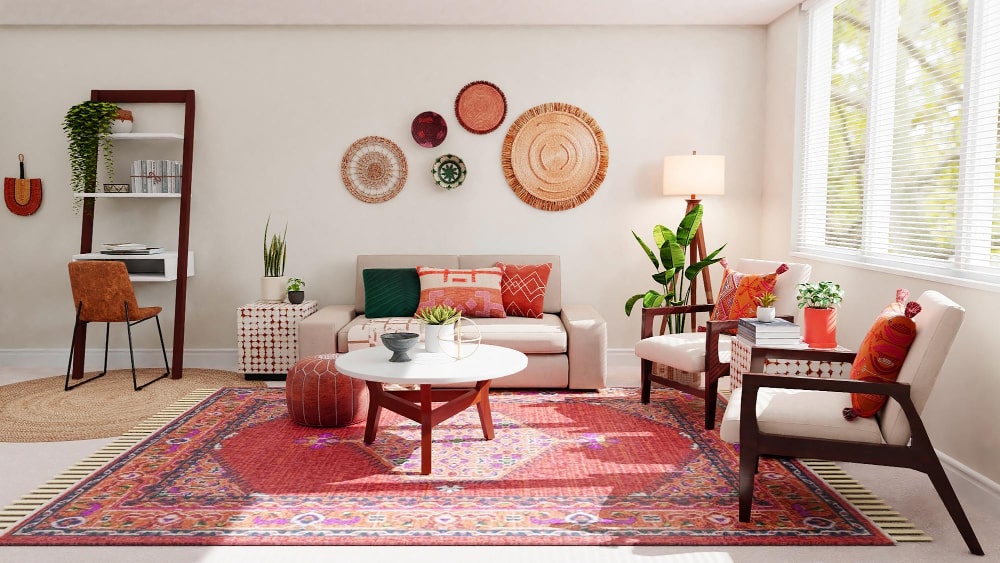Upgrade your space with sophisticated luxury interior design.
Upgrade your space with sophisticated luxury interior design.
Blog Article
Change Your Home With Important Concepts of Interior Style and Visual Appeals
By understanding the influence of shade concept and the significance of structure and patterns, one can develop rooms that are not only visually enticing but additionally deeply individual. Accomplishing this equilibrium entails more than simple decor; it incorporates a strategic setup and an eager understanding of exactly how each element communicates within an area.
Understanding Color Concept
Shade concept is a fundamental element of interior layout that considerably affects state of mind, assumption, and general visual. Comprehending the principles of color concept permits designers to produce spaces that resonate emotionally with passengers while fulfilling useful needs (Architecture Firm). Colors can be classified right into three primary kinds: primary, second, and tertiary. Each group plays a vital duty in establishing harmony within a room.
The mental impact of shades is extensive; warm hues such as reds and oranges stimulate power and warmth, while great tones like blues and greens advertise calmness and peace. Additionally, making use of complementary shades improves aesthetic rate of interest, producing striking contrasts that can raise a room's appeal.
Neutral colors, on the other hand, work as a flexible backdrop, allowing other style components to shine. It is important to consider aspects such as lighting and the space's purpose when choosing a shade combination, as these can alter the assumption of colors throughout the day.
Inevitably, a well-considered color pattern can transform a room, promoting a sense of comfort and design that aligns with the citizens' choices. Mastery of shade theory is, therefore, a crucial ability for any kind of interior designer intending to create harmonious and inviting atmospheres.
Achieving Equilibrium in Layout
How can developers attain a feeling of stability in their spaces? Accomplishing equilibrium in layout is fundamental to creating harmonious interiors.
Asymmetrical balance, on the other hand, counts on varying elements that still achieve a natural appearance. This strategy enables for more dynamic and casual setups, supplying passion while maintaining stability. By thoroughly selecting varying dimensions, shades, and structures, developers can create a visually engaging area that really feels well balanced yet energetic.
Radial balance emphasizes a central prime focus with aspects emitting outward. This design is typically seen in round designs, where furniture and decor develop a natural border that draws the eye internal.
Eventually, accomplishing balance requires thoughtful consideration of range, proportion, and the relationships between elements. interior design firms. By skillfully using these equilibrium concepts, developers can change areas into settings that feel both visually pleasing and functionally harmonious, enhancing the total experience for owners
Relevance of Spatial Awareness

An eager sense of spatial understanding enables developers to identify focal factors within a room, guiding the customer's focus to crucial functions while preserving a general sense of unity. It also assists in the tactical positioning of illumination, which can significantly influence the perception of space and state of mind. Comprehending spatial connections enables the designer to cater to the details demands of occupants, making sure that each area offers its desired objective without jeopardizing appearances.
Eventually, spatial recognition is vital for optimizing the capacity of any type of indoor room. By carefully thinking about the interaction between measurements, format, and feature, check my blog designers can create environments that not just fulfill functional needs yet also evoke a sense of comfort and appeal, boosting the overall living experience.
Including Appearance and Patterns
Accepting a varied series of textures and patterns can considerably improve the aesthetic and tactile charm of an indoor area. The strategic use numerous materials-- such as wood, steel, material, and rock-- creates depth and interest, making a room feel a lot more inviting and dynamic. For example, combining smooth surfaces with rough textures can develop an equilibrium that attracts the eye and involves the detects.
When integrating patterns, think about both range and rep. Large patterns can work as centerpieces, while smaller sized, subtle styles can match other elements without overwhelming the area. Layering patterns, such as pairing floral pillows with candy striped throws, includes complexity and a feeling of consistency if carried out thoughtfully.
It is likewise critical to preserve a natural shade palette, making certain that textures and patterns interact instead than contend for attention. By selecting a few vital textures and patterns, you can produce a combined aesthetic that reflects your individual style while enhancing the total atmosphere of the area. Ultimately, click here to read the careful consolidation of these aspects can change a mundane room right into a sophisticated atmosphere rich with personality and warmth.
Individualizing Your Room
Producing an area that mirrors your personality is vital to attaining an absolutely welcoming environment. Personalization in interior decoration enables you to infuse your distinct design and rate of interests into your home, changing it from a mere sanctuary right into a haven that talks with who you are. Begin by choosing a shade scheme that resonates with your feelings-- vibrant shades can stimulate, while soft tones use peace.
Include artwork and decor that reflect your interests, whether it be travel, nature, or abstract concepts. Showing individual collections, such as books, pictures, or mementos, can stimulate cherished memories and develop focal factors within a space. Furthermore, take into consideration customizing useful pieces, like upholstered furniture, to align with your visual choices.

Conclusion
To conclude, the improvement of a home via the vital concepts of indoor style and visual appeal necessitates an extensive understanding of color theory, balance, spatial recognition, texture, and personalization. Each component adds dramatically to creating an unified and practical living atmosphere - interior design firms. By thoughtfully integrating these concepts, individuals can enhance the aesthetic appeal and emotional vibration of their spaces, eventually cultivating a home that shows special identifications while supplying convenience and practicality
Report this page